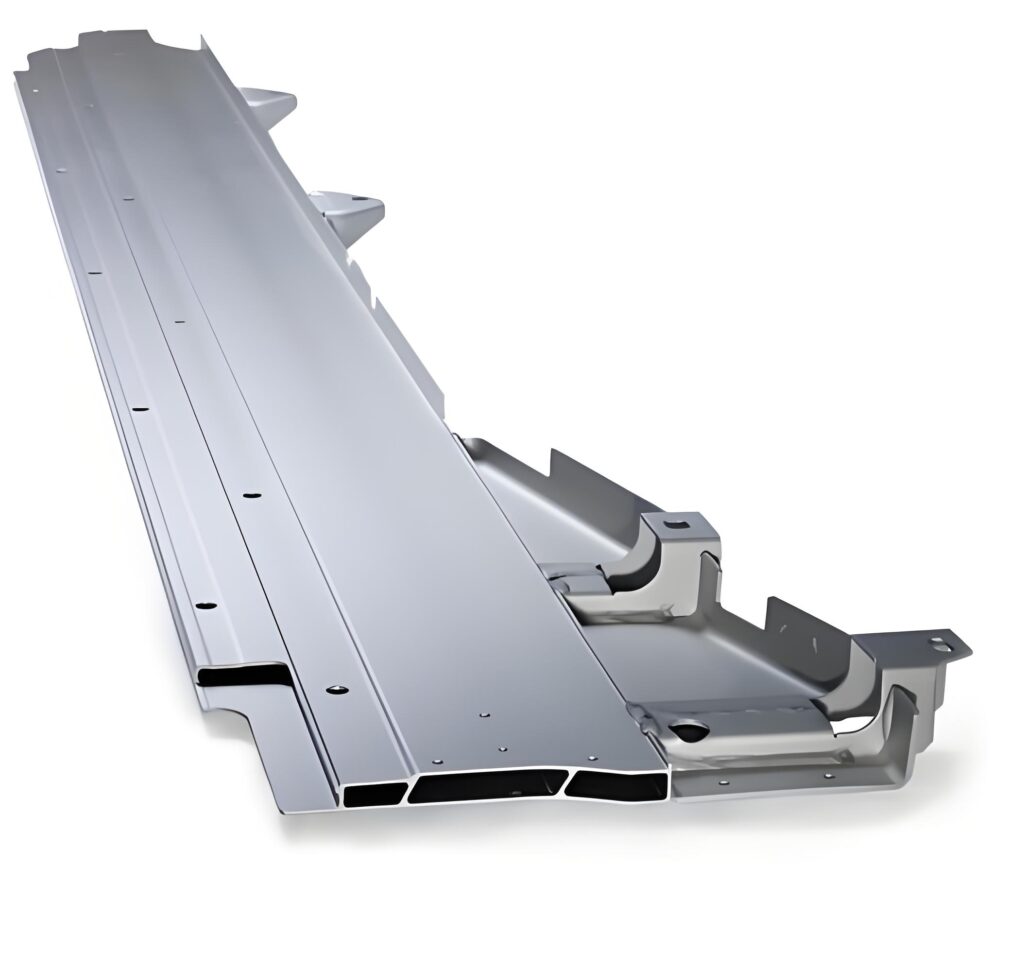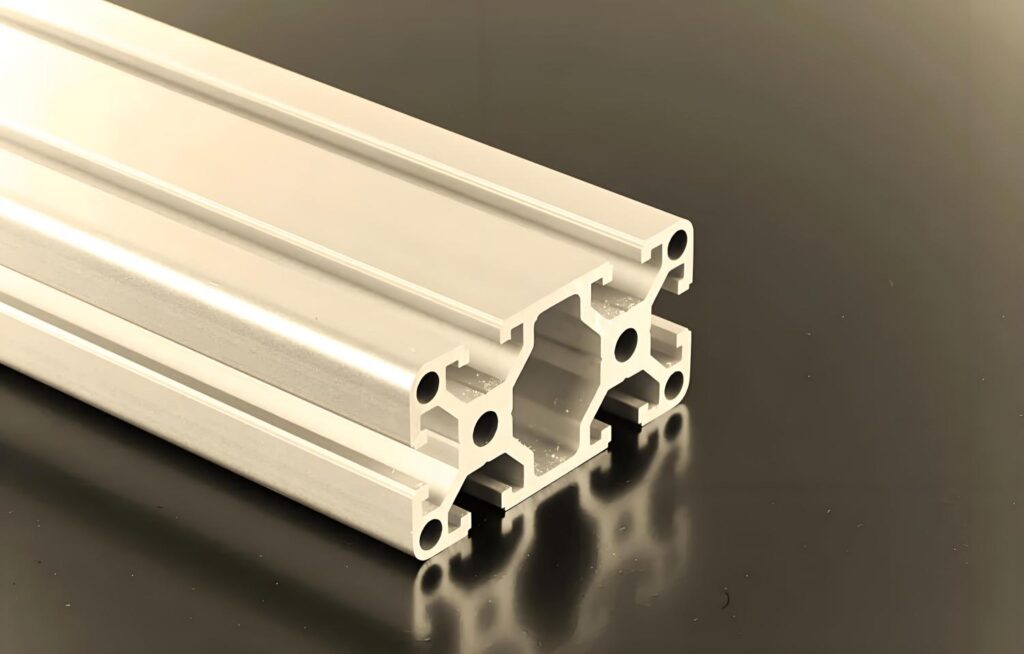In the world of precision machining and advanced engineering, few materials stand out as prominently as 7075 aluminum alloy. Renowned for its exceptional strength-to-weight ratio, this high-performance metal has become a cornerstone in industries demanding durability without excessive weight. From aerospace components to high-stress structural parts, 7075 aluminum has earned its reputation as a go-to material for applications where reliability and performance are non-negotiable. This blog dives deep into the characteristics, applications, and comparisons of this remarkable alloy, offering insights for engineers, manufacturers, and enthusiasts alike.
What Is 7075 Aluminum?
7075 aluminum is a high-strength alloy primarily composed of aluminum, zinc, magnesium, and copper. Developed initially for the aerospace industry, this material is celebrated for its ability to withstand significant stress while remaining lightweight. Often referred to as 7075 aircraft aluminum, it is part of the 7xxx series of aluminum alloys, which are known for their zinc-based composition and superior mechanical properties. The alloy’s unique blend of elements makes it ideal for applications requiring robust performance under demanding conditions.
Chemical Composition of Aluminum Alloy 7075
The specific chemical makeup of aluminum alloy 7075 is what gives it its renowned properties. It is primarily composed of the following elements:
- Aluminum (Al): 87.1% to 91.4%
- Zinc (Zn): 5.1% to 6.1%
- Magnesium (Mg): 2.1% to 2.9%
- Copper (Cu): 1.2% to 2.0%
- Chromium (Cr): 0.18% to 0.28%
- Silicon, Iron, Manganese, Titanium: trace amounts
The high percentage of zinc, combined with magnesium and copper, is what gives 7075 its high strength. Chromium, though present in small quantities, improves resistance to stress corrosion cracking. When these elements are combined and processed correctly, they form an alloy that is both lightweight and incredibly strong, ideal for demanding structural applications.
Properties of 7075 Aluminum
Mechanical Properties
One of the key reasons why 7075 aluminum is so widely used in aerospace and automotive industries is its outstanding mechanical properties.
- Ultimate tensile strength: Up to 83,000 psi (572 MPa)
- Yield strength: Up to 73,000 psi (503 MPa)
- Hardness: 150 Brinell (depending on heat treatment)
- Elongation at break: 5% to 11%
These numbers show that 7075 aluminum has strength levels comparable to some steels, but with a significantly lower density, making it ideal for weight-sensitive applications.
Physical Properties
7075 aluminum also offers a range of beneficial physical properties:
- Density: 2.81 g/cm³
- Melting Point: 477°C (890°F)
- Thermal Conductivity: 130 W/m·K
- Electrical Conductivity: 33% IACS
- Modulus of Elasticity: 71.7 GPa
While not as corrosion-resistant as alloys like 6061, the strength and machinability of 7075 make it a top choice for high-performance applications where structural integrity is paramount.
What Is 7075 Aluminum Used For?
The versatility of 7075 aluminum makes it a staple in numerous industries. Its high strength-to-weight ratio and excellent machinability open the door to a wide range of applications. Below are some of the most common uses:

Aerospace Industry
In aerospace, 7075 aluminum is a preferred material for structural components such as wing spars, fuselage frames, and landing gear parts. Its ability to withstand extreme stress while keeping aircraft lightweight is critical for fuel efficiency and performance. The alloy’s fatigue resistance also ensures longevity in parts subjected to constant vibration and stress.
Automotive Sector
High-performance vehicles, including race cars and motorcycles, rely on 7075 aluminum for components like suspension parts, chassis elements, and engine components. Its lightweight nature helps improve speed and fuel efficiency, while its strength ensures safety and durability.
Defense and Military
The defense industry utilizes 7075 aluminum in applications such as missile components, armored vehicle parts, and firearm mechanisms. The alloy’s ability to maintain structural integrity under high stress makes it invaluable for mission-critical equipment.
Sporting Goods
From bicycle frames to rock-climbing gear, 7075 aluminum is popular in sporting goods for its lightweight yet robust characteristics. Products like high-end bike components and climbing carabiners benefit from the alloy’s ability to balance weight and strength.
Industrial Applications
In industrial settings, 7075 aluminum is used for molds, dies, and high-precision machine parts. Its machinability allows for the creation of complex shapes, while its strength ensures durability in heavy-duty applications.
Comparing 7075 Aluminum to Other Alloys
Aluminum alloys come in many grades, each offering different characteristics that make them suitable for specific applications. Here’s how 7075 compares to some of the other popular choices.
7075 vs 6061
6061 is perhaps the most commonly used aluminum alloy overall, known for its versatility and corrosion resistance. While 6061 is easier to weld and has better corrosion resistance, it doesn’t match 7075 in terms of strength.
- Strength: 7075 is significantly stronger.
- Corrosion Resistance: 6061 performs better.
- Machinability: 7075 offers better performance in CNC machining.
- Cost: 7075 tends to be more expensive due to its superior mechanical properties.
7050 vs 7075
7050 is another high-strength aluminum alloy, often used in aerospace applications where improved corrosion resistance is required.
- Strength: Both offer high strength, though 7050 can retain strength better over a broader range of temperatures.
- Corrosion Resistance: 7050 has better resistance, especially in marine environments.
- Toughness: 7050 tends to have slightly higher fracture toughness.
- Machinability: 7075 is often easier to machine, depending on the temper.
2024 vs 7075
2024 aluminum is known for its excellent fatigue resistance and is also heavily used in aerospace applications.
- Strength: 7075 is stronger overall.
- Fatigue Resistance: 2024 performs better in cyclic load conditions.
- Corrosion Resistance: Both require protective coatings, but 2024 may corrode faster without treatment.
- Cost: 2024 is generally more affordable than 7075.
Advantages and Limitations of 7075 Aluminum
Advantages
- High Strength-to-Weight Ratio: Comparable to many steels.
- Excellent Machinability: Particularly in T6 condition.
- Fatigue Resistance: Performs well under repeated stress.
- Wide Range of Applications: From aerospace to sporting goods.
Limitations
- Lower Corrosion Resistance: Needs protective coatings in harsh environments.
- Poor Weldability: Not ideal for welding; special techniques required.
- Cost: Higher than more common alloys like 6061 or 2024.
Different Tempers of 7075 Aluminum
Heat treatment plays a significant role in the properties of 7075 aluminum. Among the different tempers, T6 is the most commonly used.
- 7075-O: Annealed state, lowest strength but highest ductility.
- 7075-T6: Solution heat-treated and artificially aged for maximum strength.
- 7075-T651: Stress-relieved after heat treatment, offering better dimensional stability.
- 7075-T73: Over-aged to improve corrosion resistance.
When someone refers to 7075 t6 aircraft aluminum, they highlight a variant specifically tailored for use in aviation where high strength and controlled tolerances are essential.
Manufacturing with 7075 Aluminum
Machining 7075 aluminum requires precision and expertise due to its high strength and hardness. Manufacturers must use appropriate tools, such as carbide or diamond-tipped cutters, to achieve clean cuts and avoid tool wear. The alloy’s machinability allows for intricate designs, but care must be taken to manage heat buildup during machining, as excessive temperatures can affect the material’s properties. Additionally, surface treatments like anodizing or coatings are often applied to enhance corrosion resistance and improve aesthetics.
Heat Treatment and T6 Temper
The T6 temper process is critical to unlocking the full potential of 7075 aluminum. This heat treatment involves solution heat treating followed by artificial aging, which optimizes the alloy’s strength and hardness. The result is a material that offers exceptional performance in high-stress applications, making t6 7075 aluminum a preferred choice for critical components.
Why Choose Precionn for Your 7075 Aluminum Needs?
For businesses seeking high-quality machining of 7075 aluminum, Precionn stands out as a trusted partner. With a commitment to precision and excellence, Precionn specializes in delivering custom-machined components tailored to the needs of international clients. Whether you’re in aerospace, automotive, or another high-performance industry, Precionn’s expertise ensures that your 7075 aluminum parts meet the highest standards of quality and durability. Visit their website to learn more about their capabilities and how they can support your next project.

